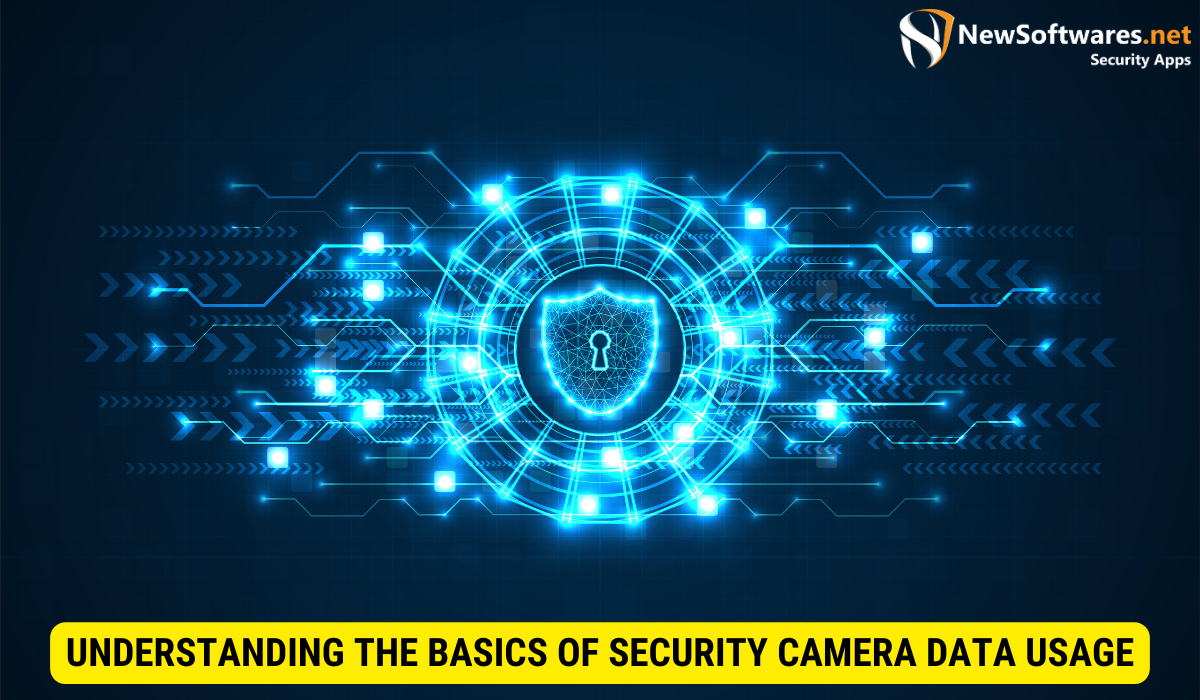Estimating daily data usage of security cameras globally involves considering factors like resolution, frame rate, recording type, and compression settings. Higher resolution and frame rates result in increased data consumption, while motion-activated recording reduces it. Accurate estimations can be based on camera specifications or manufacturer-provided information. Future trends suggest rising data consumption as technology advances. Regional factors, such as regulations and security needs, also influence data usage.
Security cameras have become an essential component in numerous industries, from residential homes to commercial spaces. As these cameras continue to evolve, one crucial aspect that needs consideration is their data usage. Understanding the daily data consumption of security cameras globally is vital for designing efficient systems and managing network resources effectively. Together, we will explore the basics of security camera data usage, including how they use data and the factors influencing their data consumption. We will also delve into the role of resolution and frame rate in data consumption, as well as the influence of continuous versus motion-activated recording. Additionally, we will discuss estimation methods for security camera data usage and explore global trends in data consumption. By the end of this article, you will have a comprehensive understanding of how to estimate the daily data usage of security cameras globally.
Understanding the Basics of Security Camera Data Usage

Security cameras have become an integral part of our lives, providing us with a sense of safety and security. These devices capture and store video footage, which requires a significant amount of data. It is crucial to comprehend how security cameras use data to better estimate their daily data consumption.
When it comes to data usage, security cameras rely on various processes to capture and store video footage. They utilize data transmission to send and receive video streams to and from storage devices or remote locations. This constant flow of data ensures that every moment is captured and stored securely.
Additionally, modern security cameras are equipped with advanced functionalities that further impact data usage. For example, many cameras feature motion detection algorithms, which help conserve data by only recording when motion is detected. This intelligent feature ensures that unnecessary footage is not captured, saving both storage space and data usage.
Factors Influencing Data Usage in Security Cameras
Several factors influence the data usage of security cameras. Understanding these factors is essential to accurately estimate the daily data consumption of these devices. Let’s take a closer look at some of the key factors:
- The resolution and frame rate of the camera: The higher the resolution and frame rate of the camera, the more data it will consume. High-definition cameras with a higher frame rate produce clearer and smoother video footage, but this comes at the cost of increased data usage.
- The type of recording (continuous or motion-activated): The recording mode of a security camera significantly impacts data usage. Continuous recording, where the camera captures video footage continuously, consumes more data compared to motion-activated recording, where the camera only records when motion is detected.
- The compression algorithm and settings: Security cameras often use compression algorithms to decrease the size of video files without compromising quality. Different compression algorithms and settings can have varying impacts on data usage. Some cameras offer adjustable compression settings, allowing users to strike a stability between video quality and data consumption.
- The length of retention for stored footage: The duration for which video footage is stored on the camera or a connected storage device also affects data usage. Cameras with longer retention periods consume more data as they need to retain a larger amount of video footage.
- The presence of audio recording: Some security cameras come with audio recording capabilities, allowing them to capture both video and audio. While audio recording adds an extra layer of information, it also increases data usage as audio files can be quite large.
By considering these factors, users can make informed decisions about their security camera setup and estimate the daily data usage more accurately. It is important to strike a balance between the desired video quality and the available data resources to ensure a seamless and efficient surveillance system.
The Role of Resolution and Frame Rate in Data Consumption
The resolution and frame rate of safekeeping cameras significantly impact data consumption. Higher resolution and faster frame rates result in more data being generated and transmitted. Let’s explore their effects in detail:
Impact of Resolution on Data Usage
Resolution states to the number of pixels in a video frame. Security cameras nowadays offer various resolution options, such as high-definition (HD) and ultra-high-definition (UHD). Higher resolution cameras produce more detailed images but also generate larger video files, resulting in increased data consumption.
Frame Rate and Its Effect on Data Consumption
The frame rate corresponds to the number of frames captured per second by a security camera. Higher frame rates outcome in smoother video playback but also increase data consumption. Cameras with faster frame rates generate more frames per second, leading to larger video sizes and higher data usage.
The Influence of Continuous vs. Motion-Activated Recording
The type of recording also plays a crucial role in security camera data usage. Let’s examine the data consumption differences between continuous and motion-activated recording:
Data Usage in Continuous Recording
In continuous recording, security cameras capture and store video footage continuously. This approach ensures comprehensive coverage but consumes a significant amount of data, especially if the camera’s resolution and frame rate are high. Long-term continuous recording requires robust storage capabilities and substantial bandwidth to accommodate the continuous transmission of video data.
Data Consumption in Motion-Activated Recording
Motion-activated recording only captures video footage when motion or activity is detected. This approach reduces data consumption compared to continuous recording since the camera is recording selectively. Security cameras equipped with motion detection algorithms analyze the scene and initiate recording only when there is movement. Consequently, this type of recording can significantly decrease data usage and optimize storage and bandwidth utilization.
Estimation Methods for Security Camera Data Usage
Estimating the daily data usage of security cameras can be approached using various methods:
Calculating Data Usage Based on Camera Specifications
One method involves calculating data usage based on the specifications of the camera. By knowing the camera’s resolution, frame rate, compression settings, and recording type, it is possible to estimate the average data consumption per hour or day. However, keep in mind that this estimation method may not account for variations resulting from real-world conditions or specific camera settings.
Estimating Data Usage Using Manufacturer’s Information
Some camera manufacturers provide information on the expected data usage of their devices. They may offer data consumption guidelines based on different recording modes and settings. Consulting the manufacturer’s documentation or support resources can provide a valuable starting point for estimating data usage.
Global Trends in Security Camera Data Usage

Data usage trends in security cameras can vary across regions due to factors such as technological advancements, surveillance regulations, and security requirements. It is essential to consider these trends when estimating daily data consumption globally:
Regional Differences in Data Usage
Some regions may have stricter regulations or higher security concerns, leading to more extensive camera deployments and higher data consumption. Factors for example population density, crime rates, and security infrastructure investments can also affect the demand for security cameras and, consequently, their data usage.
Future Predictions for Security Camera Data Consumption
As technology continues to advance, security cameras are expected to have higher resolution capabilities and faster frame rates. With the increasing demand for higher video quality, data consumption by security cameras is expected to rise globally. It is crucial to consider these predictions when planning network infrastructure and allocating resources for security camera data transmission and storage.
Key Takeaways
- Understanding the basics of security camera data usage is essential for estimating daily data consumption accurately.
- Factors influencing data usage include resolution, frame rate, type of recording, compression settings, retention length, and audio recording presence.
- Higher resolution and faster frame rates contribute to increased data consumption.
- Motion-activated recording reduces data usage compared to continuous recording.
- Estimating data usage can be done based on camera specifications or manufacturer-provided information.
FAQs
How can I estimate the daily data usage of a security camera?
Estimating daily data usage requires considering factors such as resolution, frame rate, recording type, compression settings, retention length, and audio recording presence. Calculation methods or manufacturer-provided information can assist in making more accurate estimations.
Does higher camera resolution always result in higher data consumption?
Yes, higher camera resolution typically leads to larger video files and increased data consumption. However, compression algorithms and settings can mitigate this impact to some extent.
What is the advantage of motion-activated recording?
Motion-activated recording selectively captures video footage only when there is motion or activity. This reduces data consumption compared to continuous recording and optimizes storage and bandwidth utilization.
How will future advancements in security camera technology affect data consumption?
Future advancements in security camera technology are expected to lead to higher resolution capabilities and faster frame rates. Consequently, data consumption by security cameras is likely to increase globally as the demand for higher video quality rises.
Can regional factors influence security camera data usage?
Yes, regional factors such as surveillance regulations, security requirements, population density, crime rates, and security infrastructure investments can all affect security camera deployment and the resulting data usage.
Conclusion
In conclusion, estimating the daily data usage of security cameras globally requires understanding various factors that influence data consumption. These factors include resolution, frame rate, recording type, compression settings, retention length, and audio recording presence. Higher resolution and faster frame rates result in increased data usage, while motion-activated recording reduces data consumption compared to continuous recording. Estimation methods can be based on camera specifications or manufacturer-provided information. It is crucial to consider global trends and predictions for security camera data consumption when planning network infrastructure and allocating resources. By carefully considering these factors, individuals and organizations can effectively estimate the daily data usage of security cameras worldwide and optimize their system designs accordingly.
